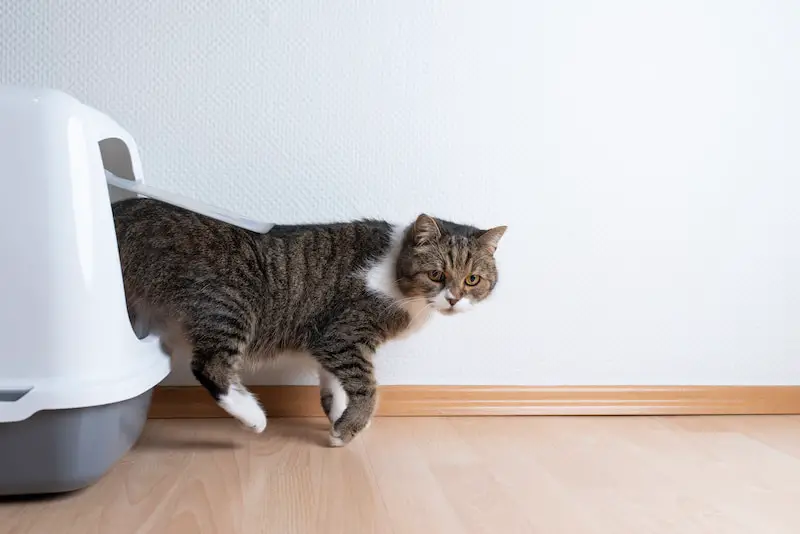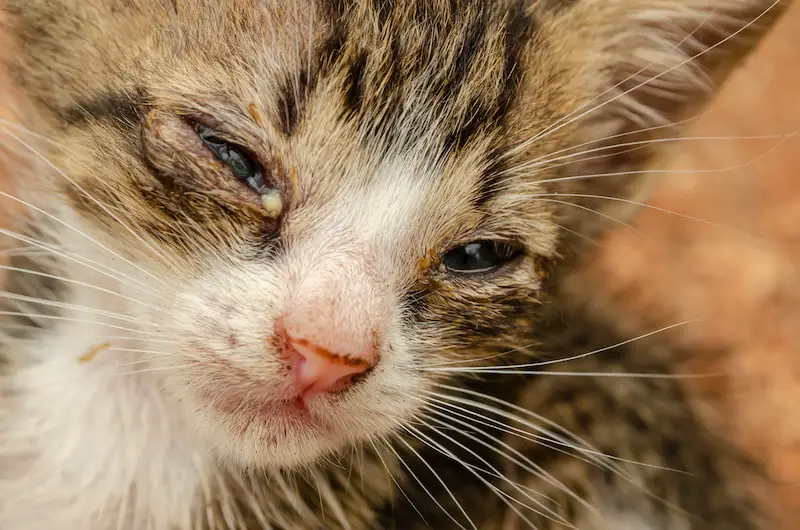It can sometimes be hard to tell when an ailment is bad enough to necessitate a costly vet visit. Some common signs you need to take your cat to the vet are obvious distress, changes in appetite and litter box behavior and coughing or discharge from the eyes and nose. Although many concerning issues will go away on their own, some diseases can be quickly fatal. If you observe any of the symptoms below, there’s a good change you need to take your cat to the vet.
1. Obvious Distress
Cats typically hide signs of pain or distress, so obvious distress is a sign you need to take your cat to the vet. Note any abnormal behavior in your cat, including yowling, hiding, acting aggressive or acting in pain.
2. Abnormal Litter Box Behavior
Peeing outside of the litter box is a common form of unusual litter box behavior. If this just started recently, it could be a sign of Feline Lower Urinary Tract Disease (FLUTD), and Feline Idiopathic Cystitis in particular. While these are generally not urgent or severe, a rare urinary obstruction (usually seen in males) can be fatal. Excessive or minimal urination are also signs you may need to take you cat to the vet.

3. Vomiting
Aside from vomiting up a hairball or breakfast, repeated vomiting should cause concern. This can be a sign of poisoning or other gastrointestinal problems. Combined with changes in eating, drinking and peeing, repeated vomiting is a sign you need to take your cat to the vet.
4. Excessive Fatigue
Sleeping a lot is normal for cats as they usually rest for most of the day. However, large decreases in energy levels to the point where your cat won’t eat or never leaves one spot is a problem. Fatigue is a symptom of many disorders, from thyroid problems to diabetes.
5. Changes in Appetite
If you notice abnormal changes in appetite, such as eating more or less, this could be a sign you need to take your cat to the vet. Cats are frequent eaters, visiting their food bowl up to 10 times per day. If your cat displays sudden disinterest in her food, it could be an indicator of a lot of underlying issues.
6. Dragging the Back Legs
Aortic thromboembolism is a complication that can develop in cats with heart disease. In this condition, a blood clot becomes lodged in the back legs, causing paralysis and distress. It is vital you take your cat to the vet immediately.
7. An Unusual Lump or Growth
Most lumps and bumps on your cat’s body are probably harmless, either cysts or calcium deposits. However, there’s still a chance they could be a serious ailment and need immediate medical attention. In any case, growths can make it difficult to move properly and be uncomfortable for cats.
8. Coughing or Labored Breathing
There are a lot of respiratory issues that can affect cats. Changes in breathing such as coughing or shallow breathing can be a sign of a viral or bacterial disease. It’s important you take your cat to the vet immediately as your cat may need medication ASAP. Changes in breathing can also be a sign of tumors, parasites or exposure to toxins.
9. Discharge from the Eyes or Nose
Like changes in breathing, discharge from the eyes and nose can be a symptom or respiratory illness. As such, it’s a sign you need to take your cat to the vet.

10. Injury
Obviously if your cat is bleeding or clearly injured you need to take them to the vet immediately. Since cats are masters at hiding pain, though, it might not be obvious they’re injured. As a general rule you’ll want to get them checked out if they’ve been in a fight with another animal or had obvious trauma such as falling on their back.














